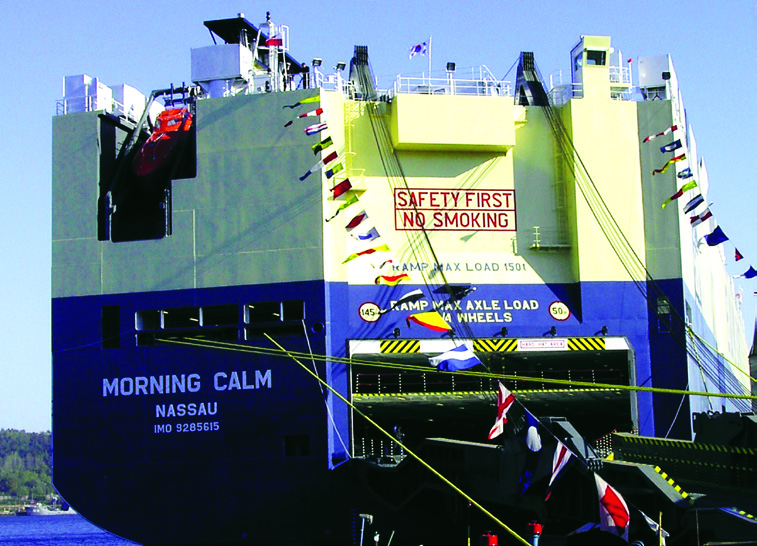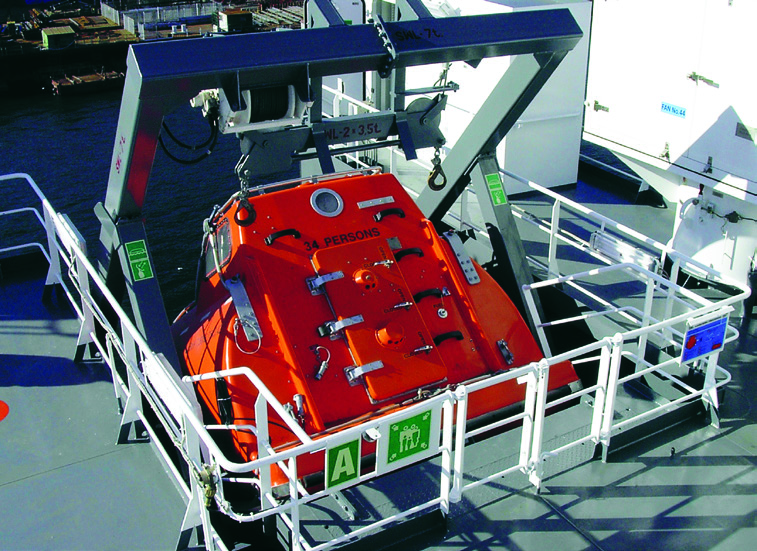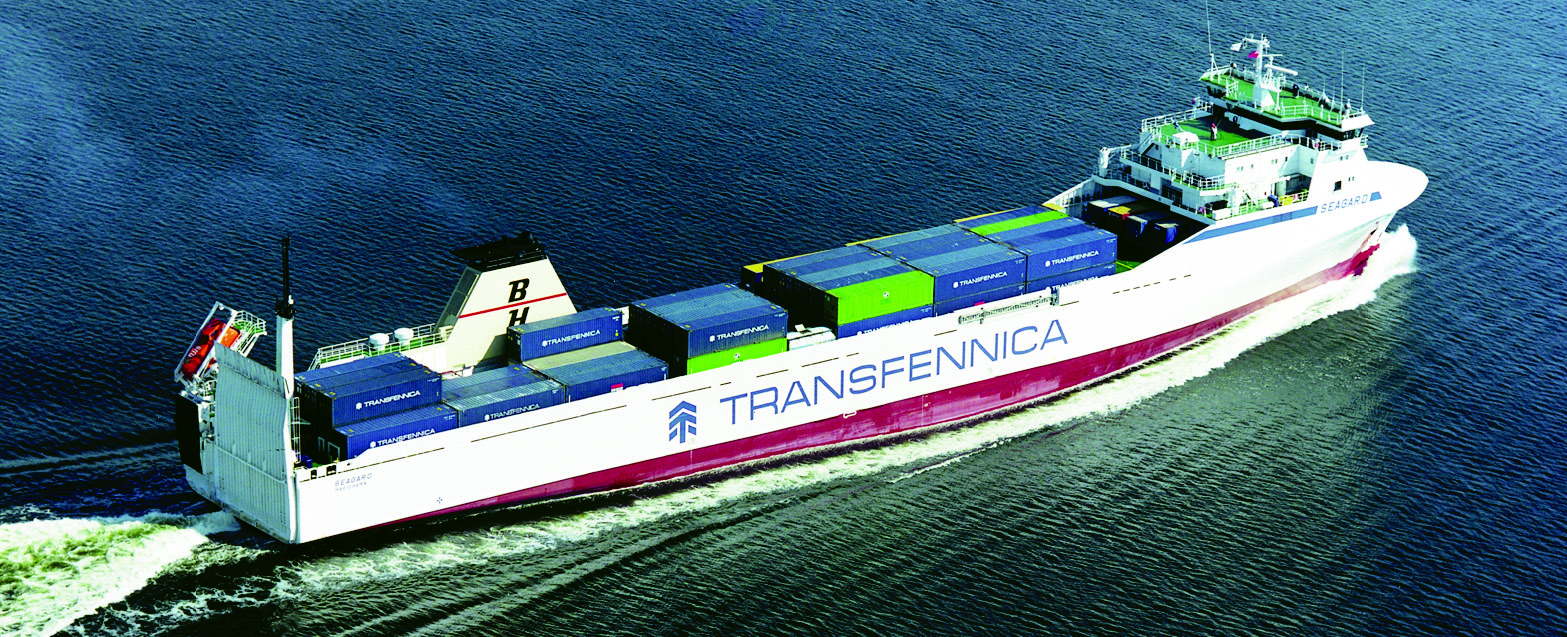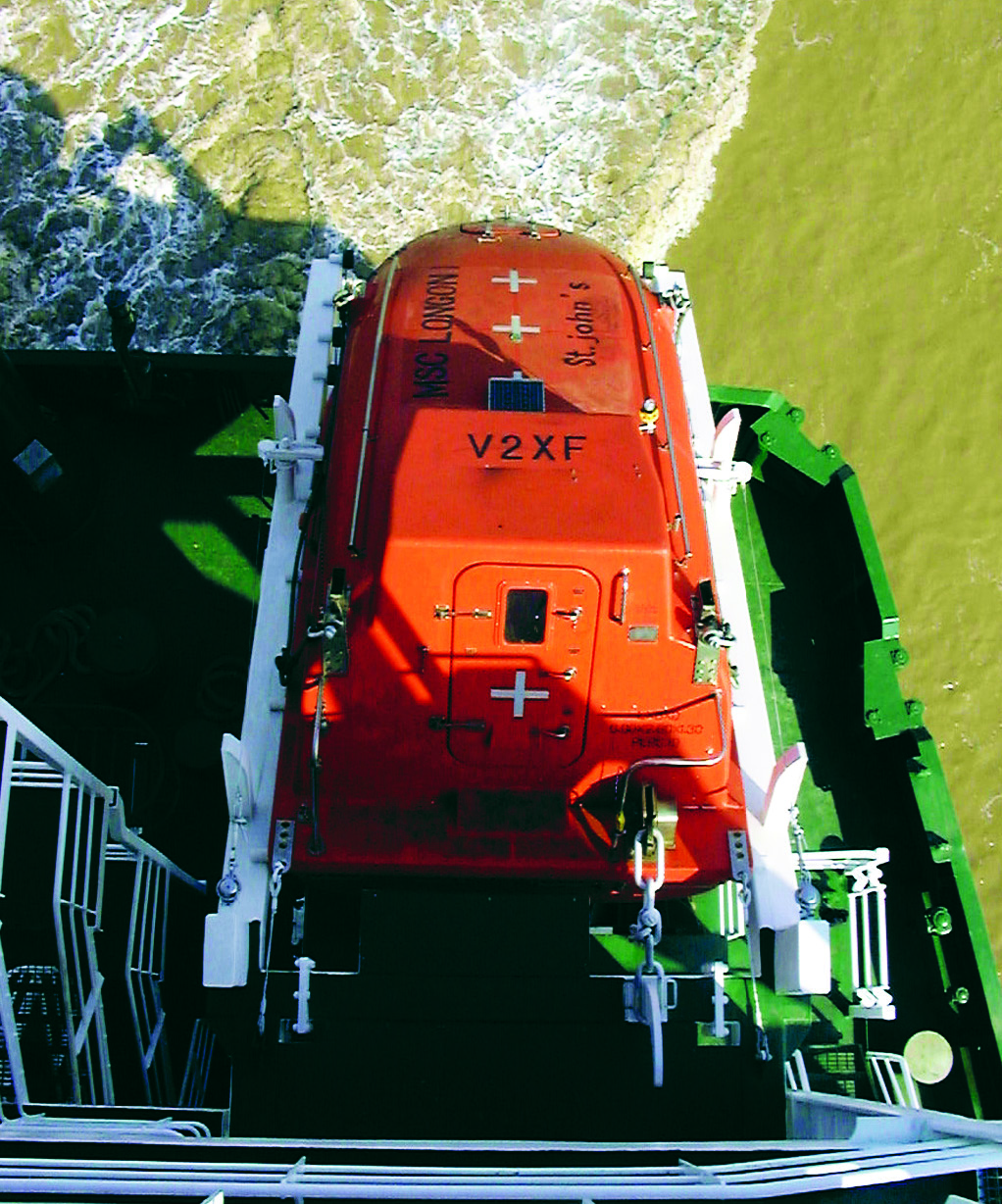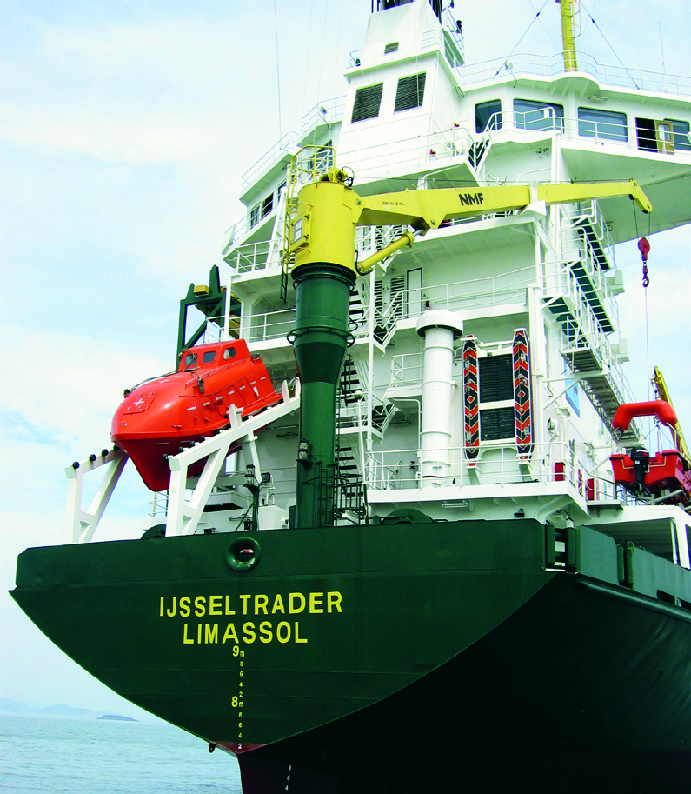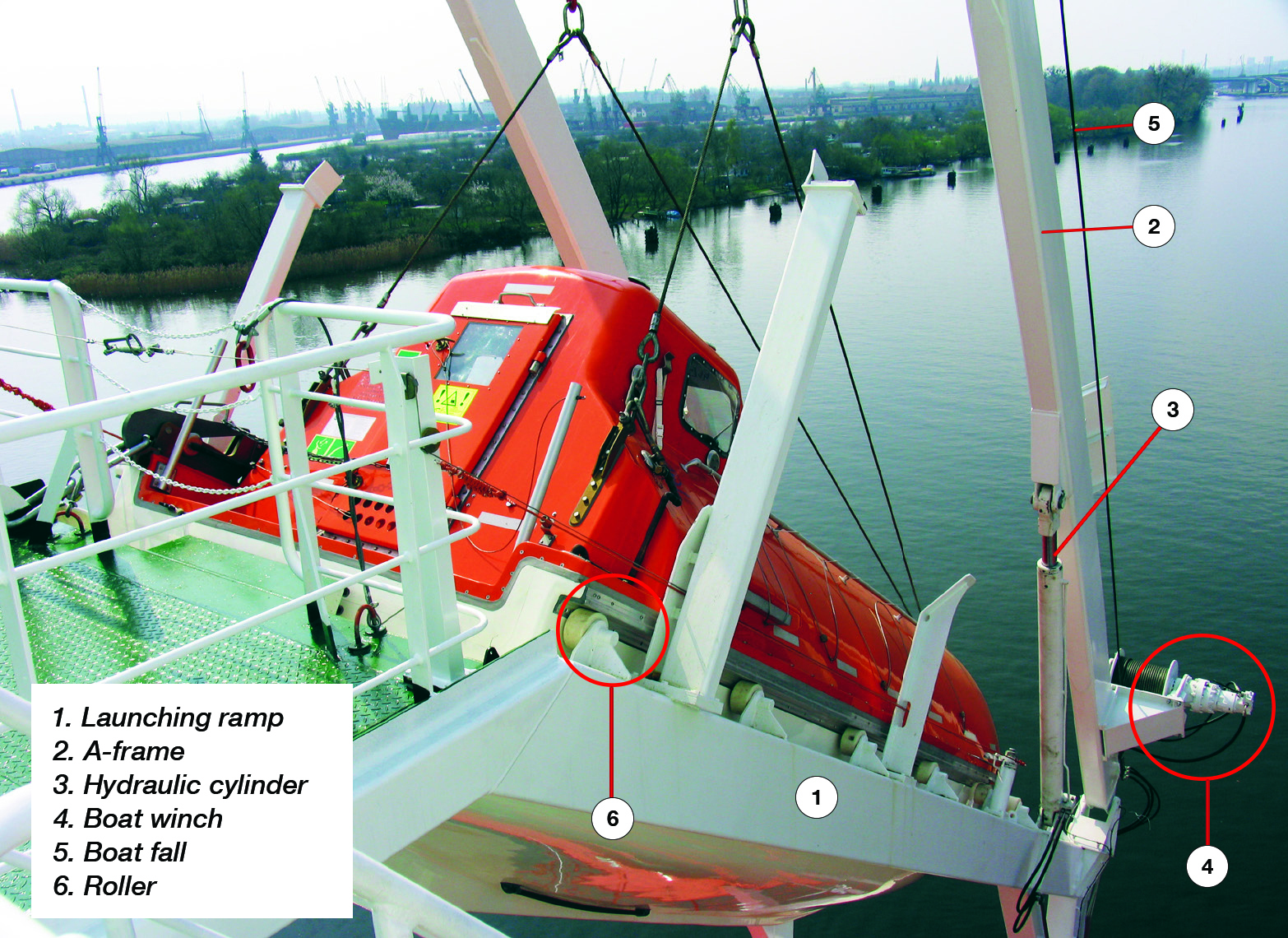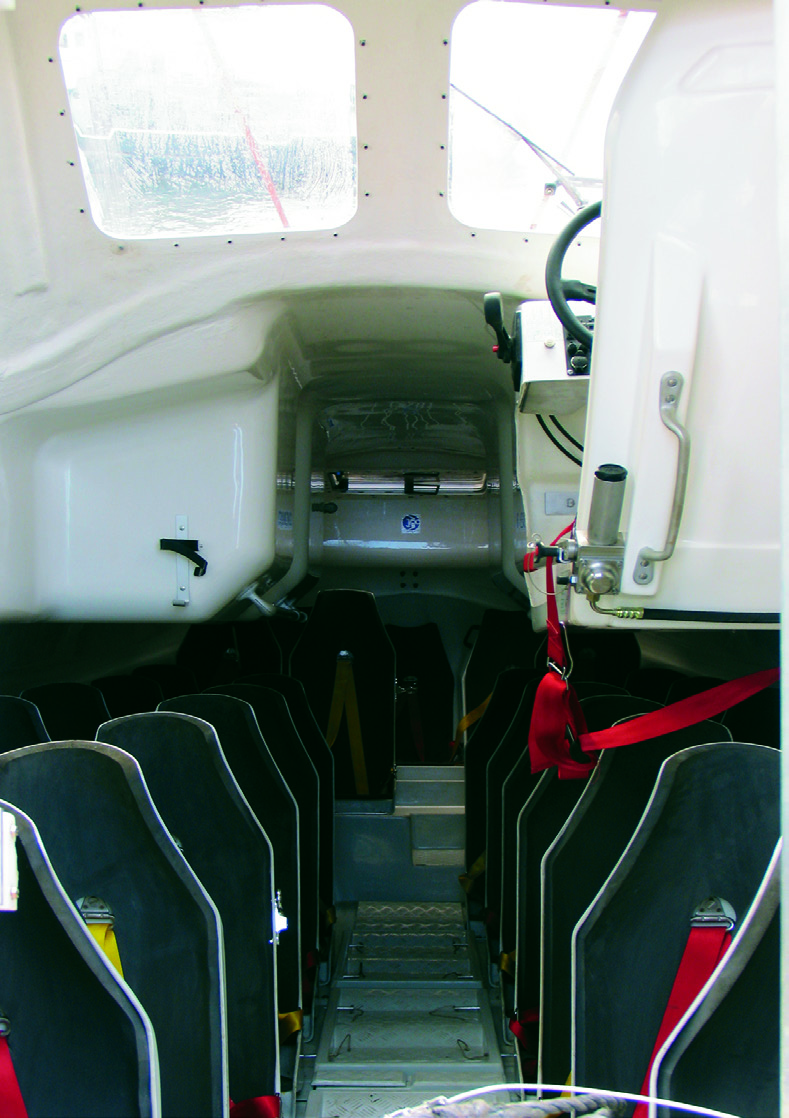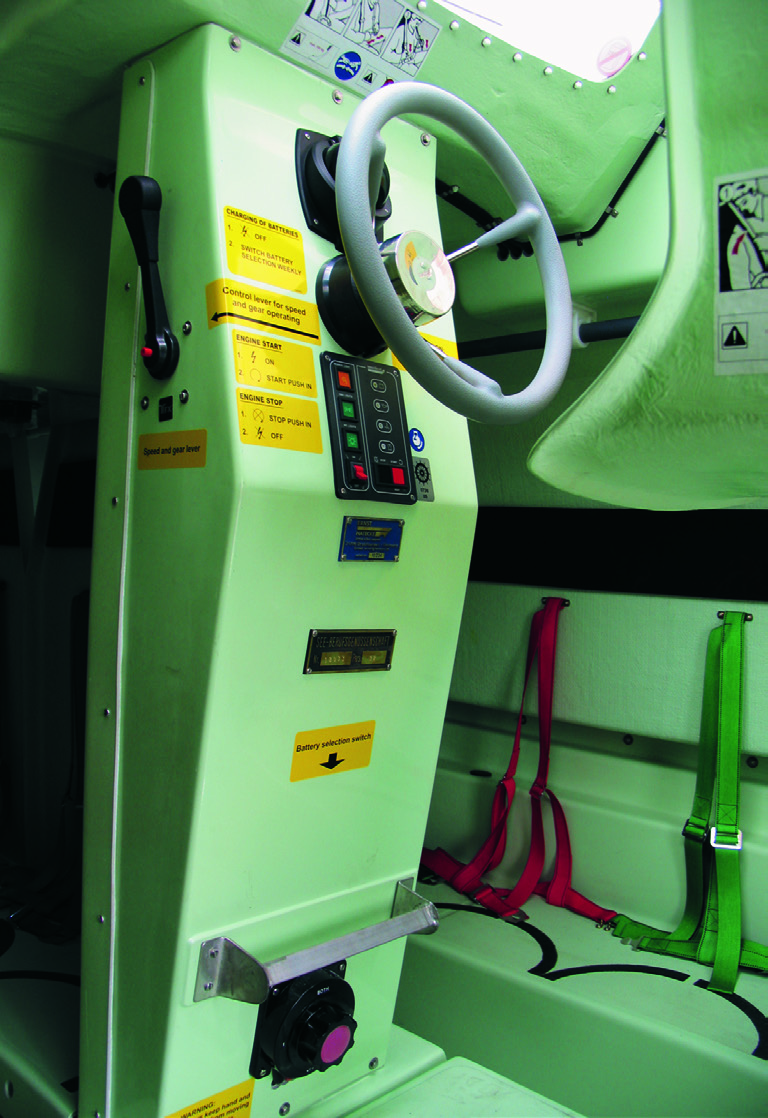

Free-fall lifeboat
A lifeboat constructed for free-fall launching. The certificate of approval for a free-fall lifeboat shall state free-fall certification height, required launching ramp length, and launching ramp angle for the free-fall certification height.
The free-fall lifeboat concept first came to light in 1897 when Swedish designer A.E. Falk patented a blueprint of an enclosed lifeboat capable of sliding off a ship stern. Thirty years later, the Bay and River Navigation Company’ s Capt White proposed a “unsinkable submarine lifeboat”. It wasn’ t until 1977 that the maritime world witnessed the first manned-launch of free-fall lifeboat from the stern of the m/s TARCOOLA at Oresundsavarvet Shipyard.
The benefits of free-fall lifeboat are clear: during rapid evacuation in emergencies, the boat slides out from a ramp onboard the ship/installation and hits the water well away from the ship or installation with a high positive forward motion. Passengers are safe and secure in an enclosed cabin, safely strapped to anatomically-shaped seats. The lifeboat system is robust and can withstand high winds, powerful waves and extreme weather conditions. Makers state that testing boats in free fall do not affect the structural condition and claim that some boats have been dropped over 2000 times without significant damage.
To recover the free-fall lifeboat two solutions can be adopted: an integral recovery system or a simple ramp and a combined lifesaving and provision crane. Integral recovery system consists of a pivoting A-frame that sits above the sliding ramp and is moved by two hydraulic cylinders. A wire rope engages the boat and lifts it to the required height before the A-frame is pivoted inboard to drop the boat into the correct position. However, a freefall craft cannot be used as rescue boat, so a six-man rescue boat is required in addition to the lifeboat.
Note: For safety reasons it is not acceptable to carry inherently buoyant lifejackets during free-fall launching so all occupants of free-fall lifeboats are to be provided with approved inflatable lifejackets, which can be worn when launching.
